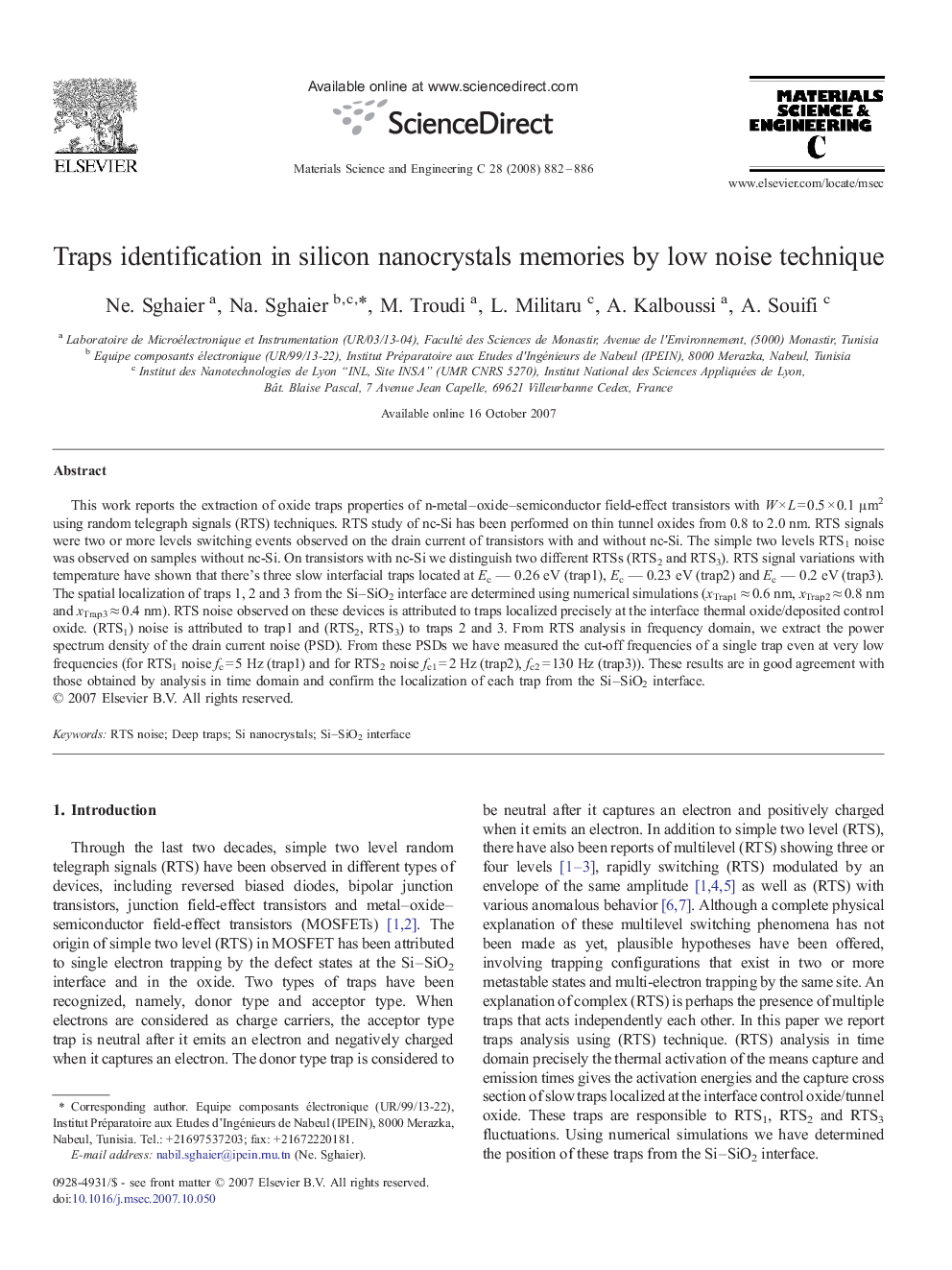| Article ID | Journal | Published Year | Pages | File Type |
|---|---|---|---|---|
| 1431103 | Materials Science and Engineering: C | 2008 | 5 Pages |
Abstract
This work reports the extraction of oxide traps properties of n-metal-oxide-semiconductor field-effect transistors with W Ã L = 0.5 Ã 0.1 μm2 using random telegraph signals (RTS) techniques. RTS study of nc-Si has been performed on thin tunnel oxides from 0.8 to 2.0 nm. RTS signals were two or more levels switching events observed on the drain current of transistors with and without nc-Si. The simple two levels RTS1 noise was observed on samples without nc-Si. On transistors with nc-Si we distinguish two different RTSs (RTS2 and RTS3). RTS signal variations with temperature have shown that there's three slow interfacial traps located at Ec - 0.26 eV (trap1), Ec - 0.23 eV (trap2) and Ec - 0.2 eV (trap3). The spatial localization of traps 1, 2 and 3 from the Si-SiO2 interface are determined using numerical simulations (xTrap1 â 0.6 nm, xTrap2 â 0.8 nm and xTrap3 â 0.4 nm). RTS noise observed on these devices is attributed to traps localized precisely at the interface thermal oxide/deposited control oxide. (RTS1) noise is attributed to trap1 and (RTS2, RTS3) to traps 2 and 3. From RTS analysis in frequency domain, we extract the power spectrum density of the drain current noise (PSD). From these PSDs we have measured the cut-off frequencies of a single trap even at very low frequencies (for RTS1 noise fc = 5 Hz (trap1) and for RTS2 noise fc1 = 2 Hz (trap2), fc2 = 130 Hz (trap3)). These results are in good agreement with those obtained by analysis in time domain and confirm the localization of each trap from the Si-SiO2 interface.
Related Topics
Physical Sciences and Engineering
Materials Science
Biomaterials
Authors
Ne. Sghaier, Na. Sghaier, M. Troudi, L. Militaru, A. Kalboussi, A. Souifi,
